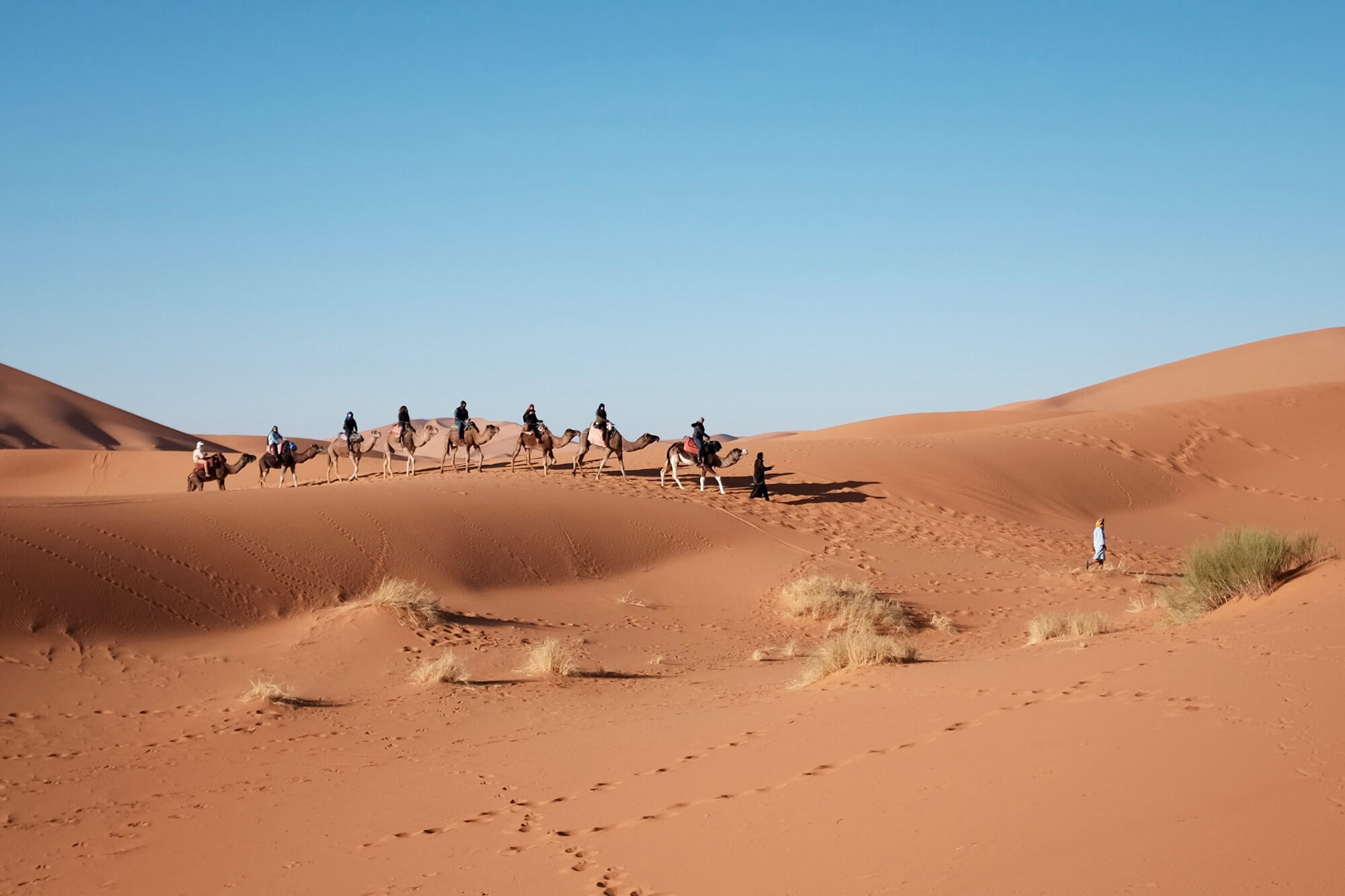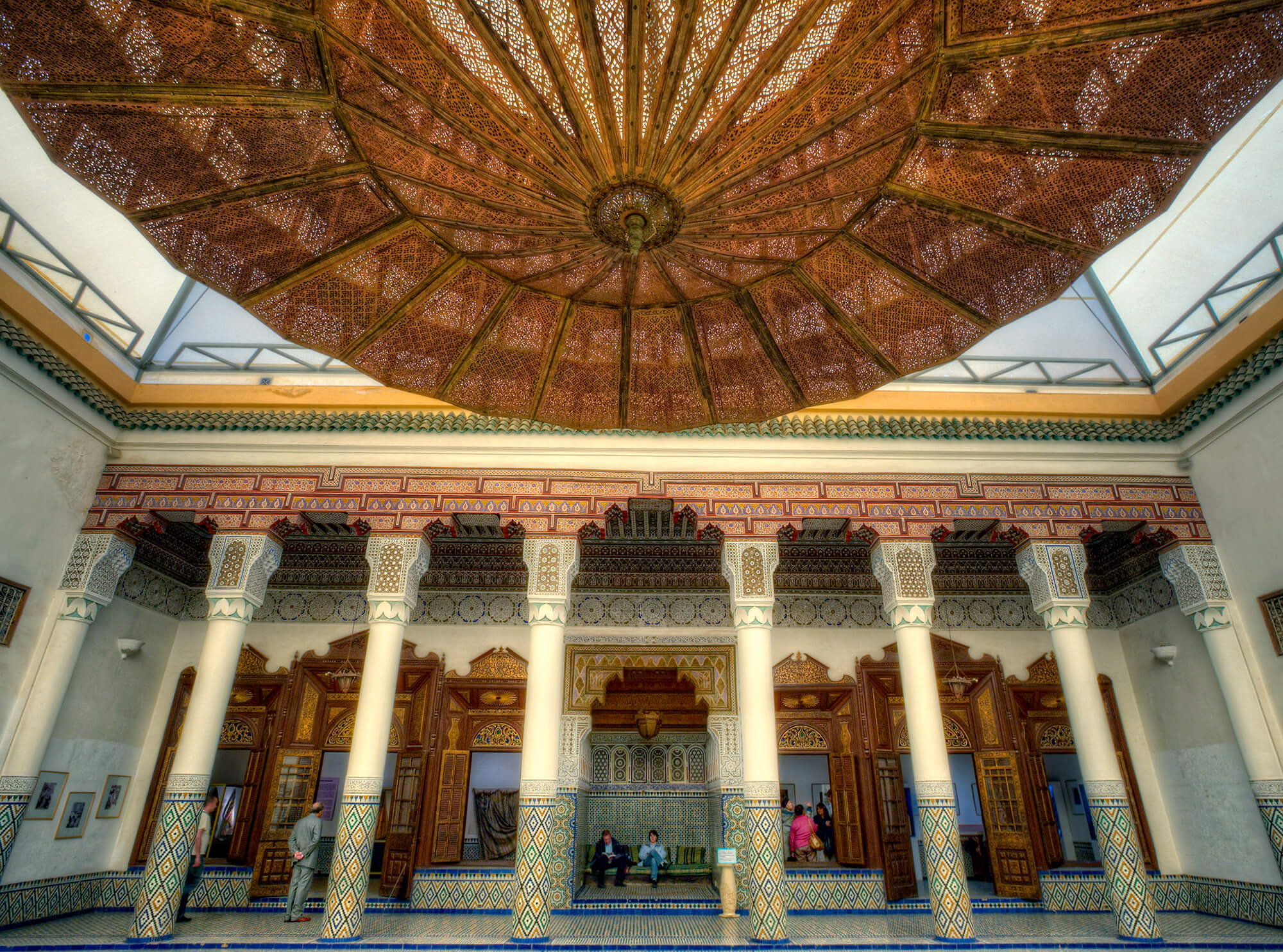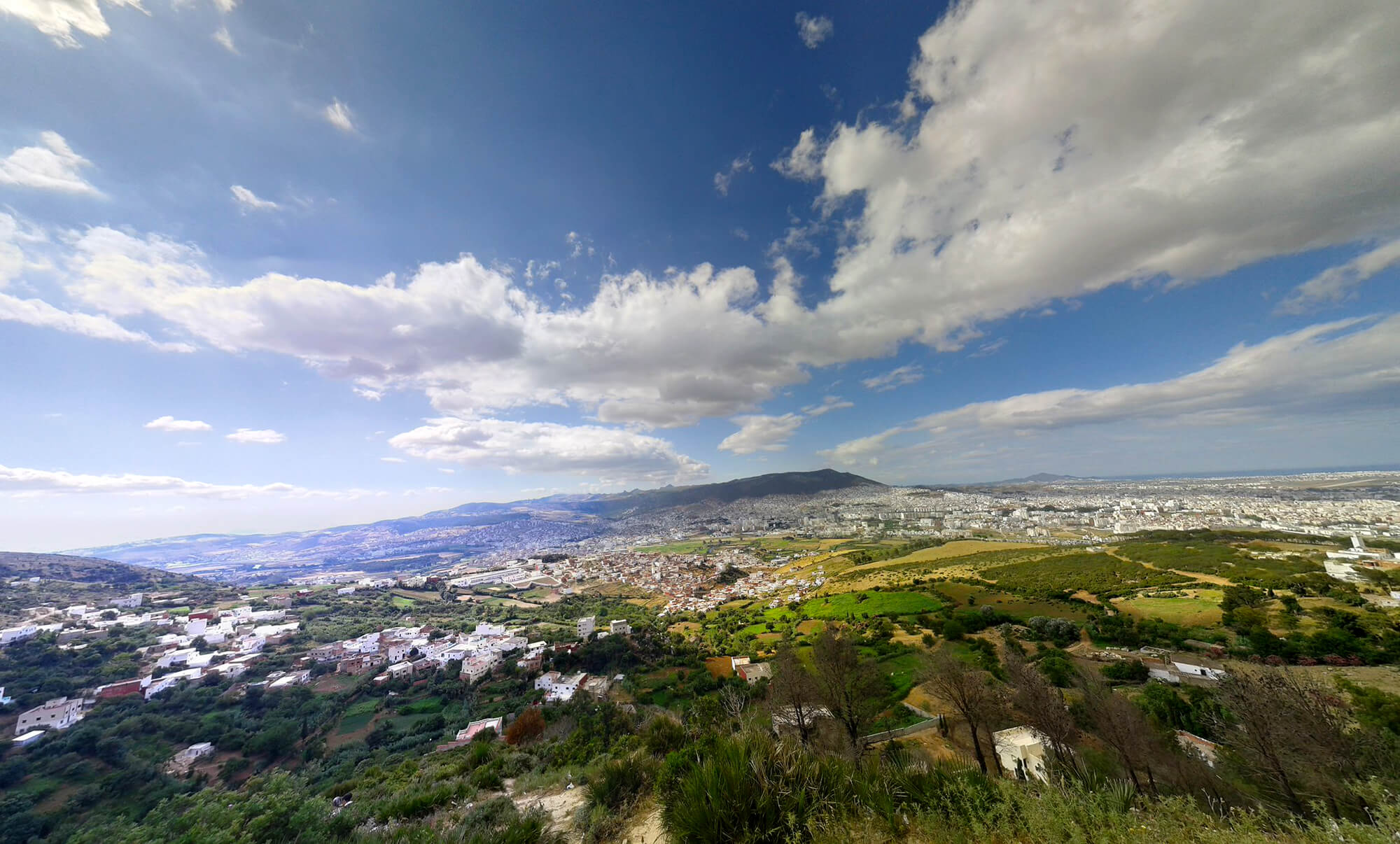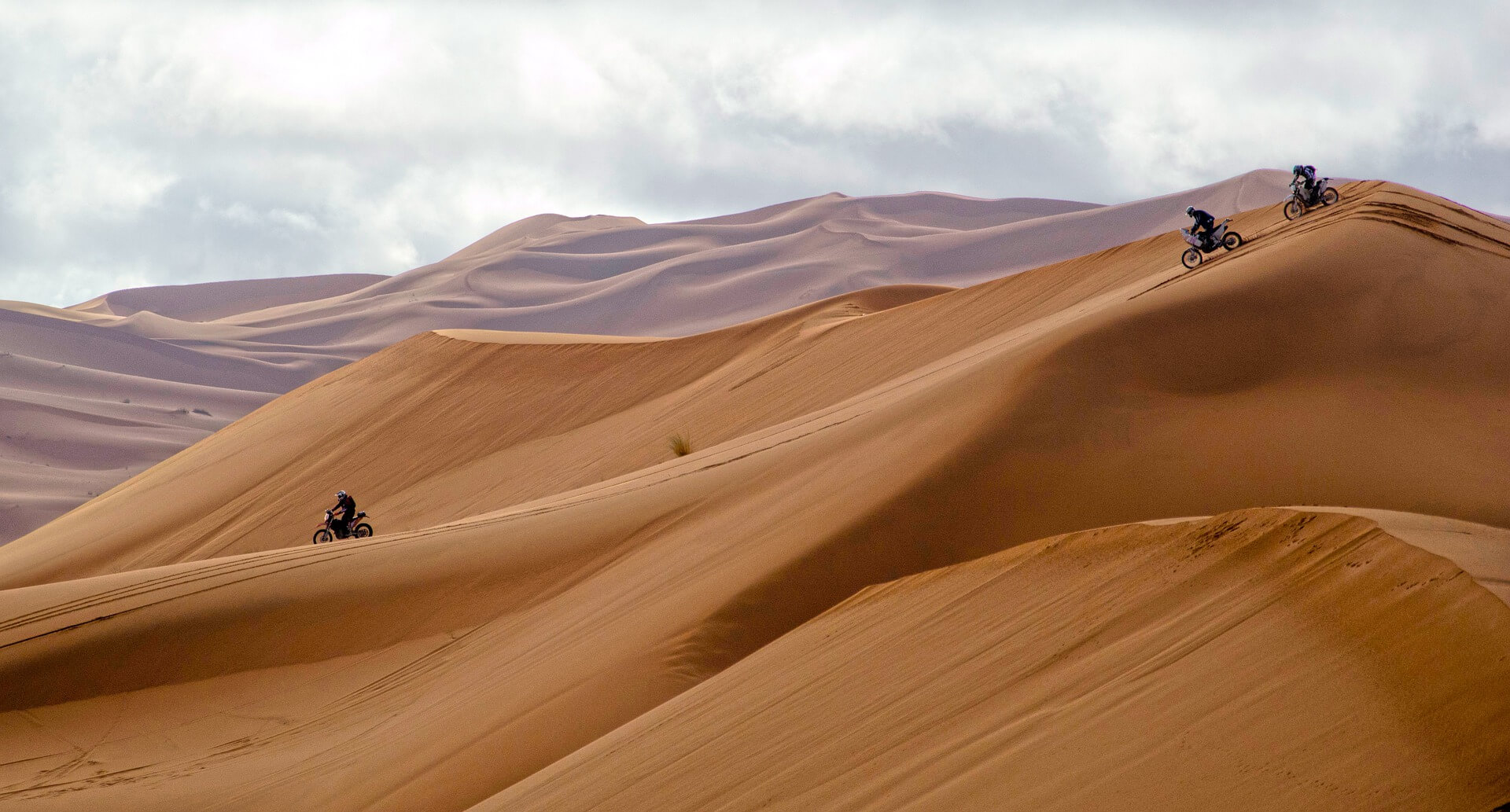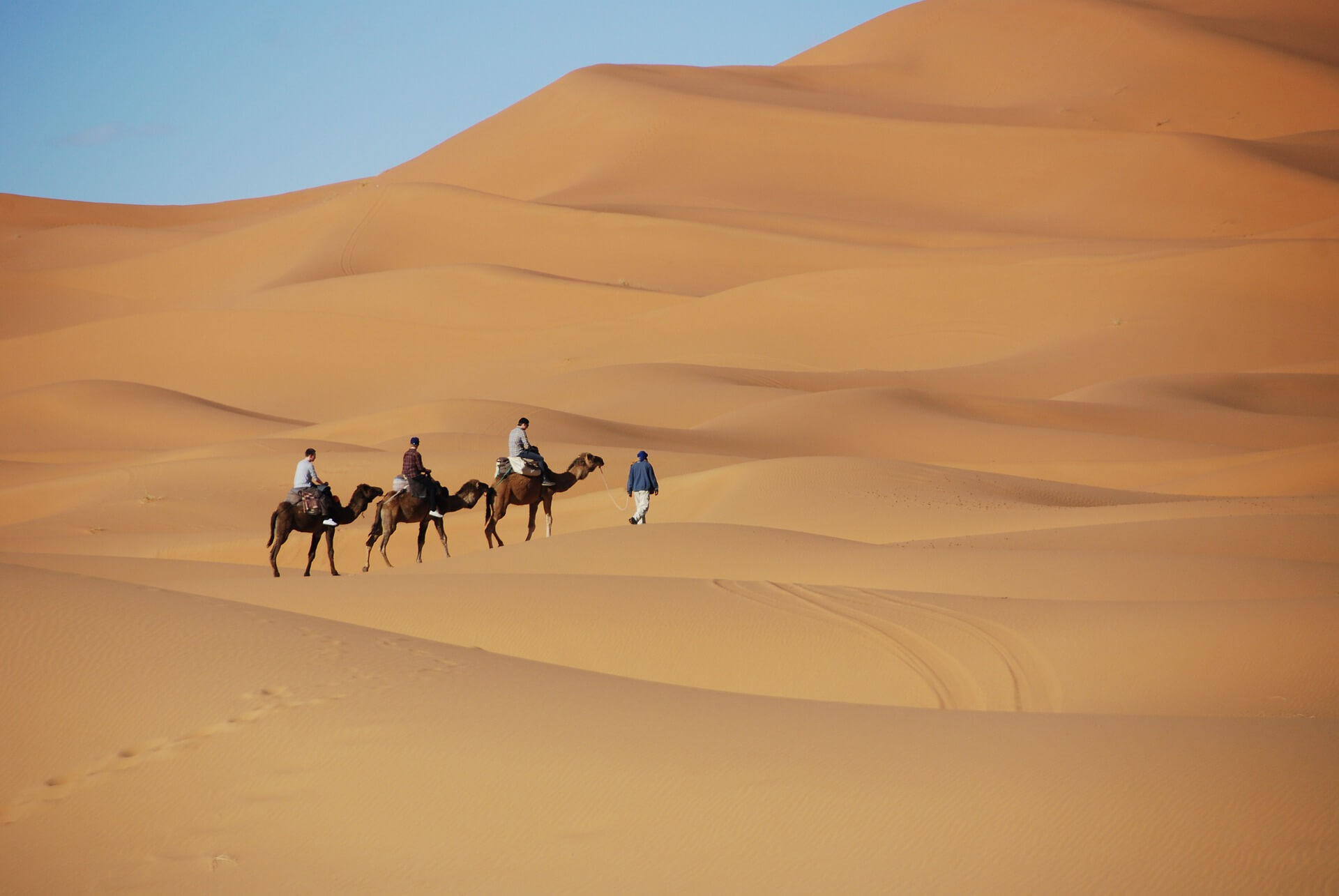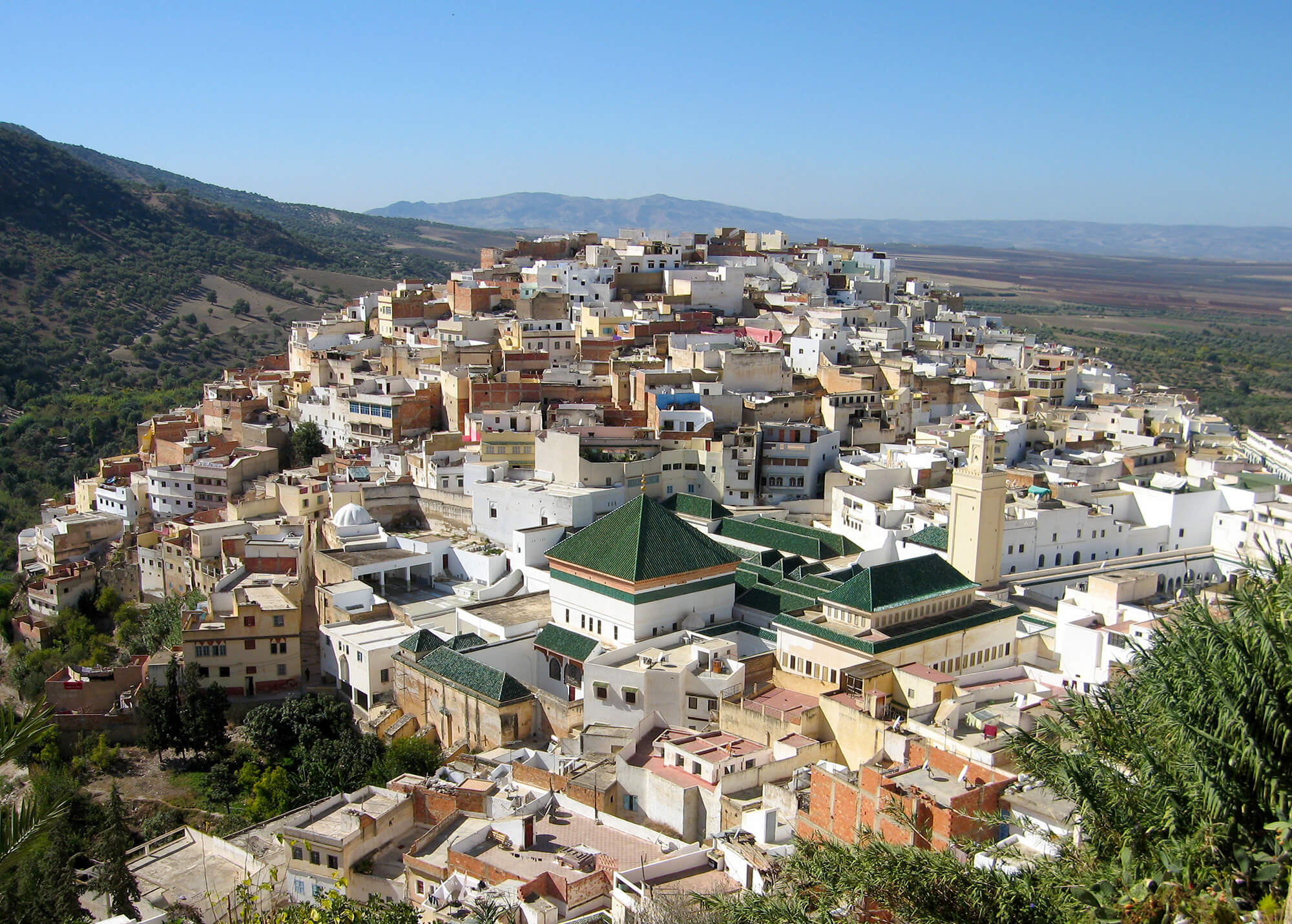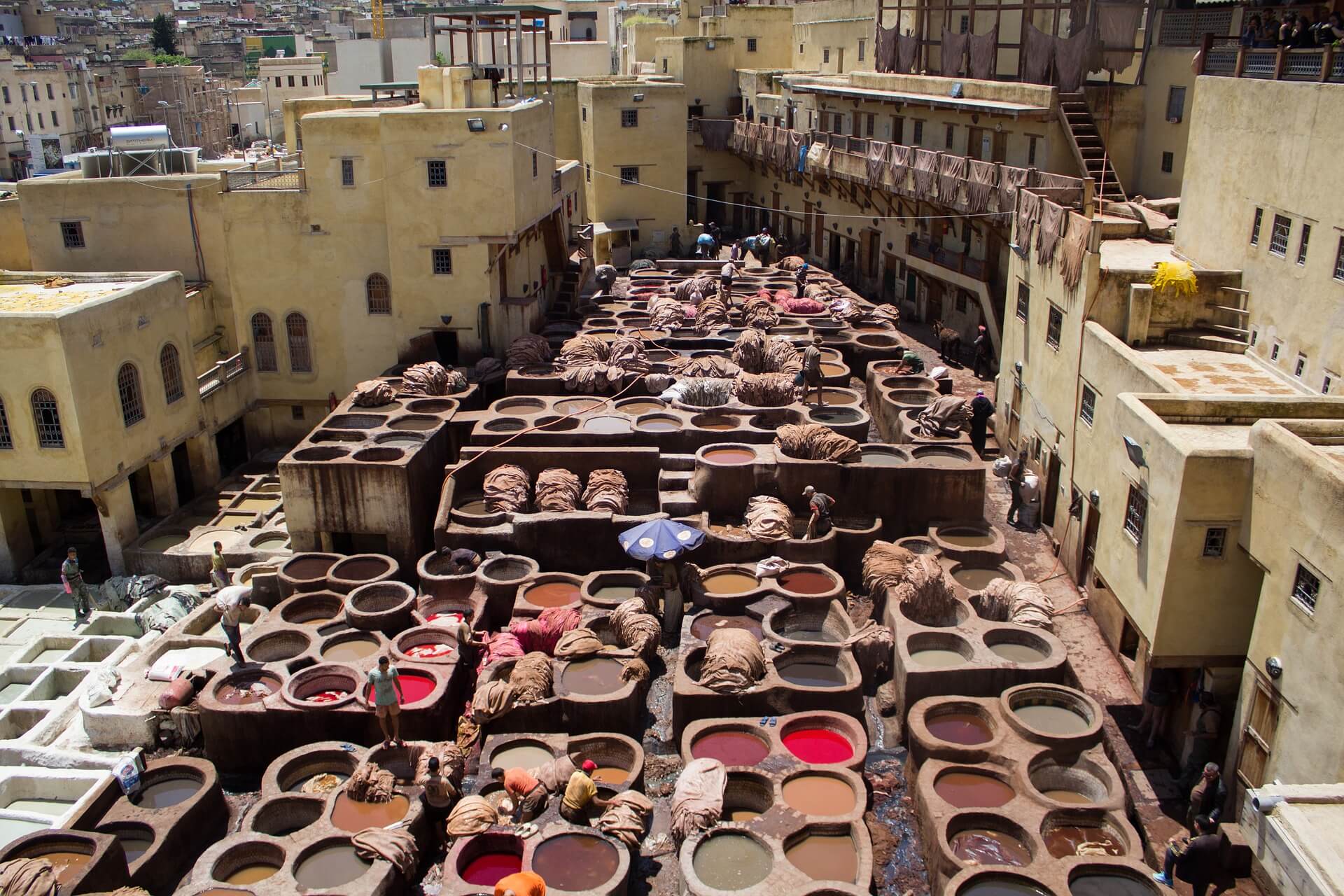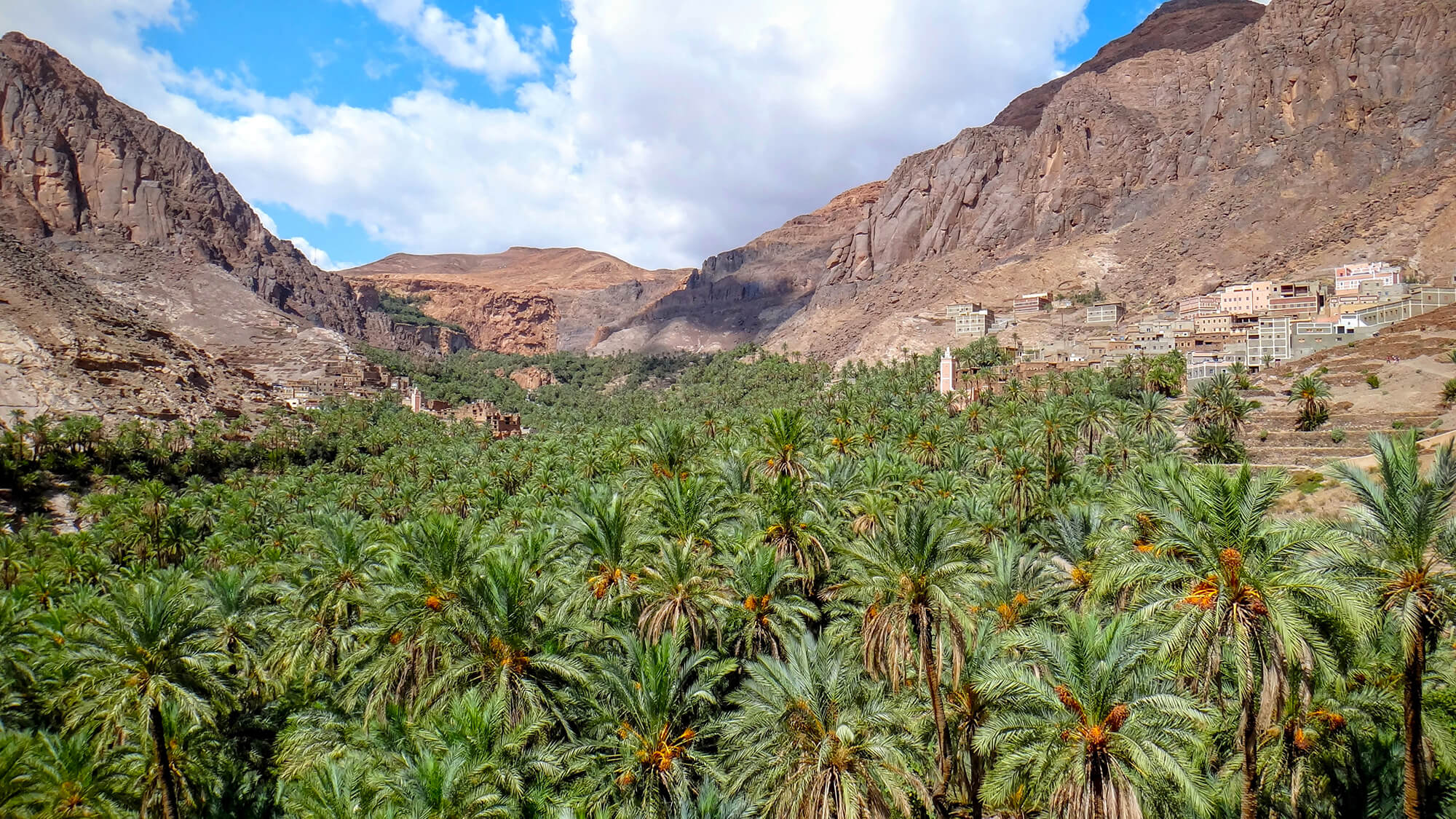There’s more to Morocco than just the Sahara. Discover other magical desert landscapes with strange rock formations and multi-colored terrains. Expand your travel horizons and create your own unforgettable desert experience.
The deserts of Morocco sweeping across the south feel otherworldly—wind-sculpted horizons, quiet evenings around a campfire, and a night sky so clear you can trace the Milky Way with your finger.
Whether you have just a day to spare from Marrakech or you’re dreaming of a multi-night Sahara expedition, Morocco offers a desert experience for every timeline. You can book a classic Sahara Desert trip or take a camel tour in one of several regions, from the stony expanses of Agafay to the far reaches of the Zagora Desert.
Most travelers plan at least one night under canvas; two nights lets you slow down, watch both sunset and sunrise, and settle into the rhythm of the dunes. If you’re sensitive to heat, the most comfortable months are generally November to March, when days are mild and nights crisp.
Agafay Desert
Just 40 kilometers outside Marrakech, Agafay trades rolling sand for rippling stone. It isn’t a dune sea like the Sahara, but its bare, undulating hills mirror the soft forms of waves, with the High Atlas Mountains rising like a painted backdrop on clear days.
Because it’s only about an hour away, Agafay is perfect when time is tight: arrive in the late afternoon, ride camels across the knobbly ridgelines as the light turns honey-gold, linger over dinner by the fire, and either head back to the city or stay the night for a luminous sunrise.
If you’d like a touch of water with your wilderness, Lake Takerkoust sits at the edge of the region, where you can swim, rent a canoe or pedal boat, and meander along easy hiking and cycling paths before returning to your camp.
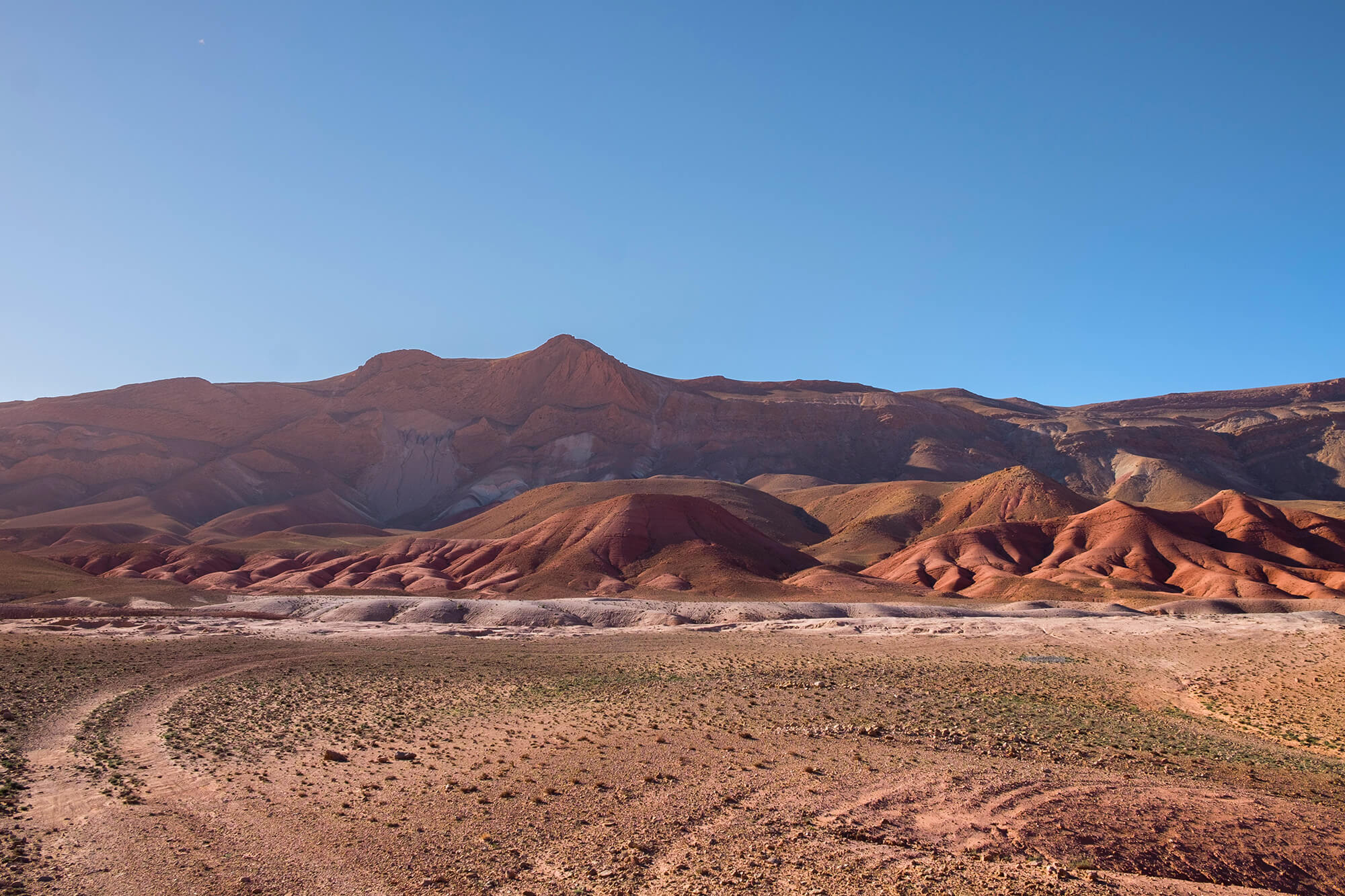
Merzouga Desert
For the archetypal Sahara image—towering, flame-orange dunes curving like frozen surf—make for Merzouga and the great sand sea of Erg Chebbi.
The journey is part of the reward: from Marrakech it’s a scenic 9–10-hour drive (often broken with an overnight in the Dades or Ouarzazate area), while from Fes it’s usually 7–8 hours across cedar forests and palm oases.
Merzouga town sits barely a kilometer from the dunes, so you can stroll to the sand or mount a camel right from your lodge. Sunset rides climb a ridge for wide-angle views; after dark, dinner by lantern gives way to drumming and a sky dense with stars.
By day, a 4×4 loop reveals the desert’s many layers—nomad encampments, black-stone hammada, a palm oasis, and Khamlia village where Gnawa musicians keep West-African rhythms alive.
In spring, keep an eye out for Dayet Srij, the seasonal lake that draws flamingos and other migratory birds to this unlikely water mirror.
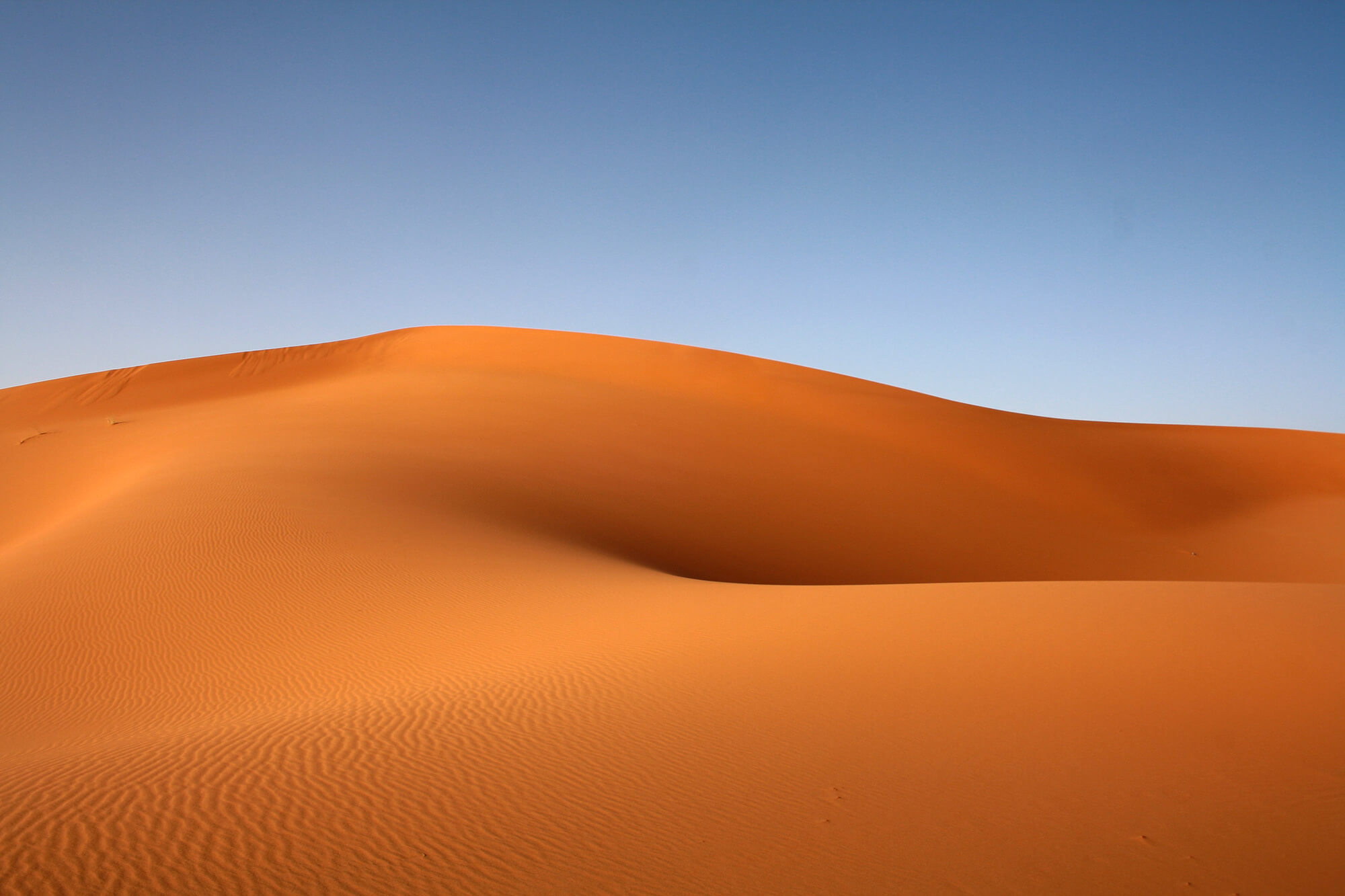
Zagora Desert & Erg Chigaga
If you prefer solitude and wilder edges, the Zagora region leads to Erg Chigaga, Morocco’s largest and most remote dune field.
The drive from Marrakech to Zagora runs about six to seven hours through the date-palmed Draa Valley, then continues off-road into a landscape that feels truly unbound.
The dunes here are lower than Erg Chebbi’s but stretch broader and emptier, and the silence settles like a blanket. Camps are smaller and farther apart, sunsets feel bigger, and mornings begin with the low hiss of the kettle and the scent of mint tea.
If you’ve always imagined the Sahara as a place where time loosens its grip, Chigaga delivers.
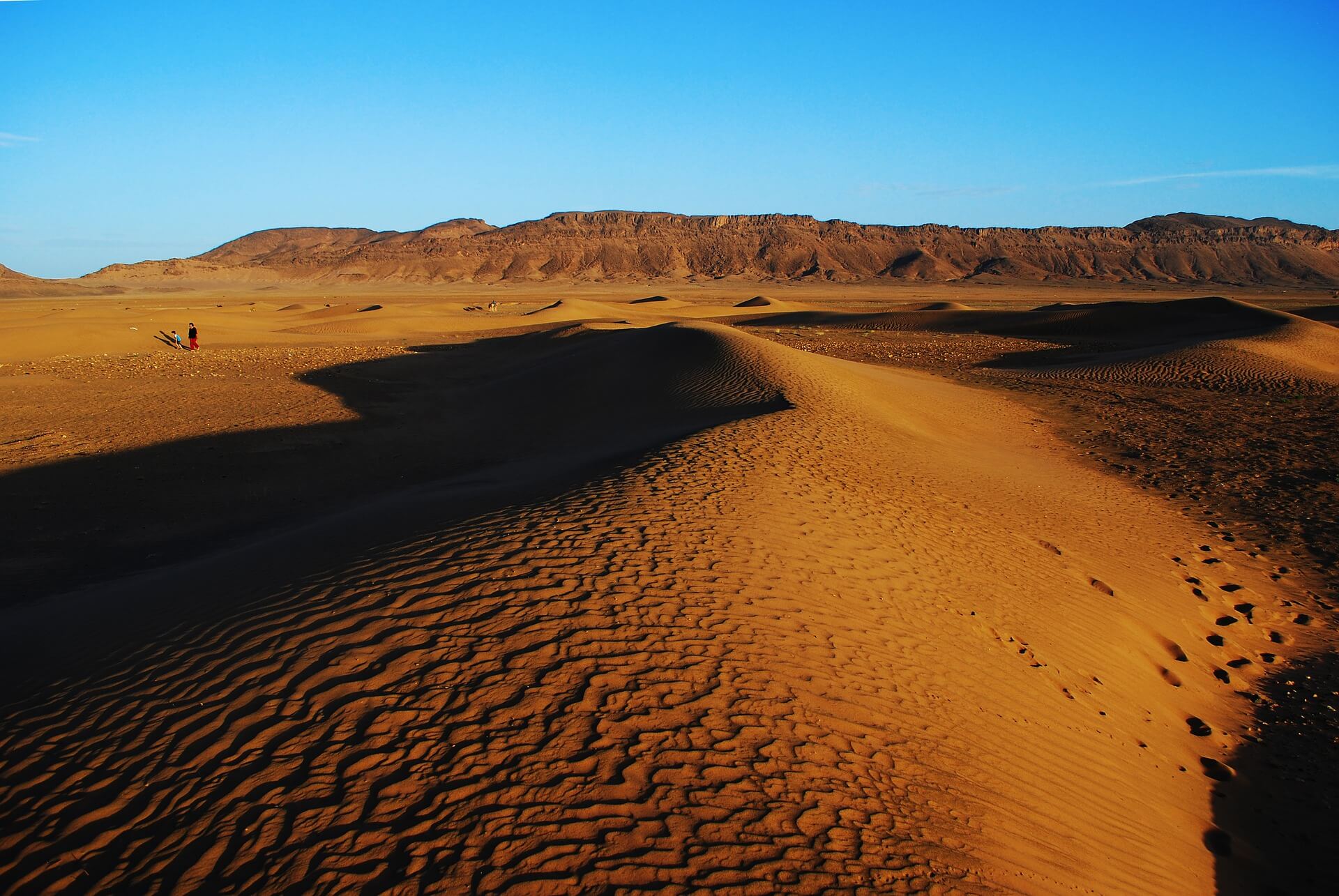
Desert Activities and Things To Do
Camel trekking is the quiet classic—no engine, no hurry, just the sway of the saddle and the sound of soft hooves in sand. If you want to cover more ground or reach nomad tents and hidden viewpoints, a 4×4 circuit is ideal; guides will often weave in visits to mineral sites or fossil beds near Erfoud.
For a dose of adrenaline, quad biking follows designated tracks, while sandboarding turns any steep face into a playground.
Stargazing is spectacular year-round, especially on moonless nights when the Milky Way spills from horizon to horizon.
In summer, some visitors try traditional sand bathing—short, supervised sessions where warm sand is packed around the body—believed locally to soothe joint and back pain.
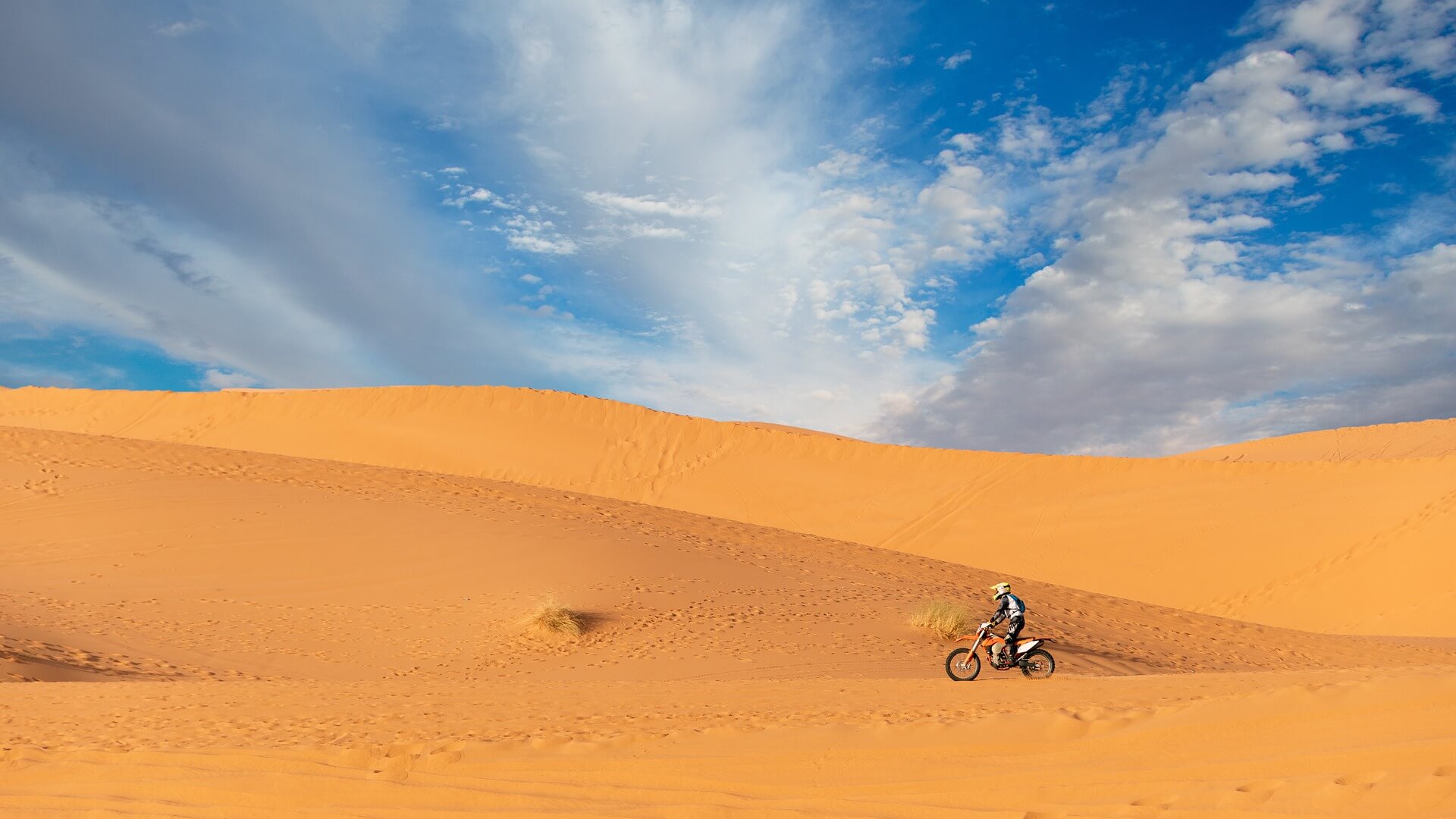
Desert Towns to Visit
Erfoud: An oasis town often called the “Gateway to the Sahara,” Erfoud pairs everyday desert life with a rich archaeological soul. Fossil workshops line the streets, date palms flourish in nearby groves, and autumn brings the region’s famous date harvest to market.
Merzouga: This small, sand-hued settlement seems to melt into the edge of Erg Chebbi. Local lore says the area was once lush before being turned to desert as divine punishment for villagers who refused a hungry stranger; today, the dunes glow at sunrise and the town hums with travelers bound for camel treks and campfires.
Ouarzazate: Nicknamed “Hollywood of Africa,” Ouarzazate blends earthen kasbahs with film studios and sweeping desert backdrops seen in The Mummy, Gladiator, and Game of Thrones. It also hosts stages of the legendary Marathon des Sables—often called the toughest footrace on earth.
Rissani: Unhurried and traditional, Rissani is known for its weekly market, calm souks, and the Moulay Ali Cherif Mausoleum. Just beyond town, the ruins of Sijilmassa—once a great caravan city—stand with two ornate gateways and clusters of fortified villages.
Taroudant: Encircled by 16th-century ramparts in the Souss Valley, Taroudant mixes artisan life with quiet plazas. Walk the walls, explore the former home and collection of Chilean artist Claudio Bravio at Palais Musée Claudio Bravio, linger in Place Al Alaouyine, and browse beautifully crafted silver at Bijouterie Essada.
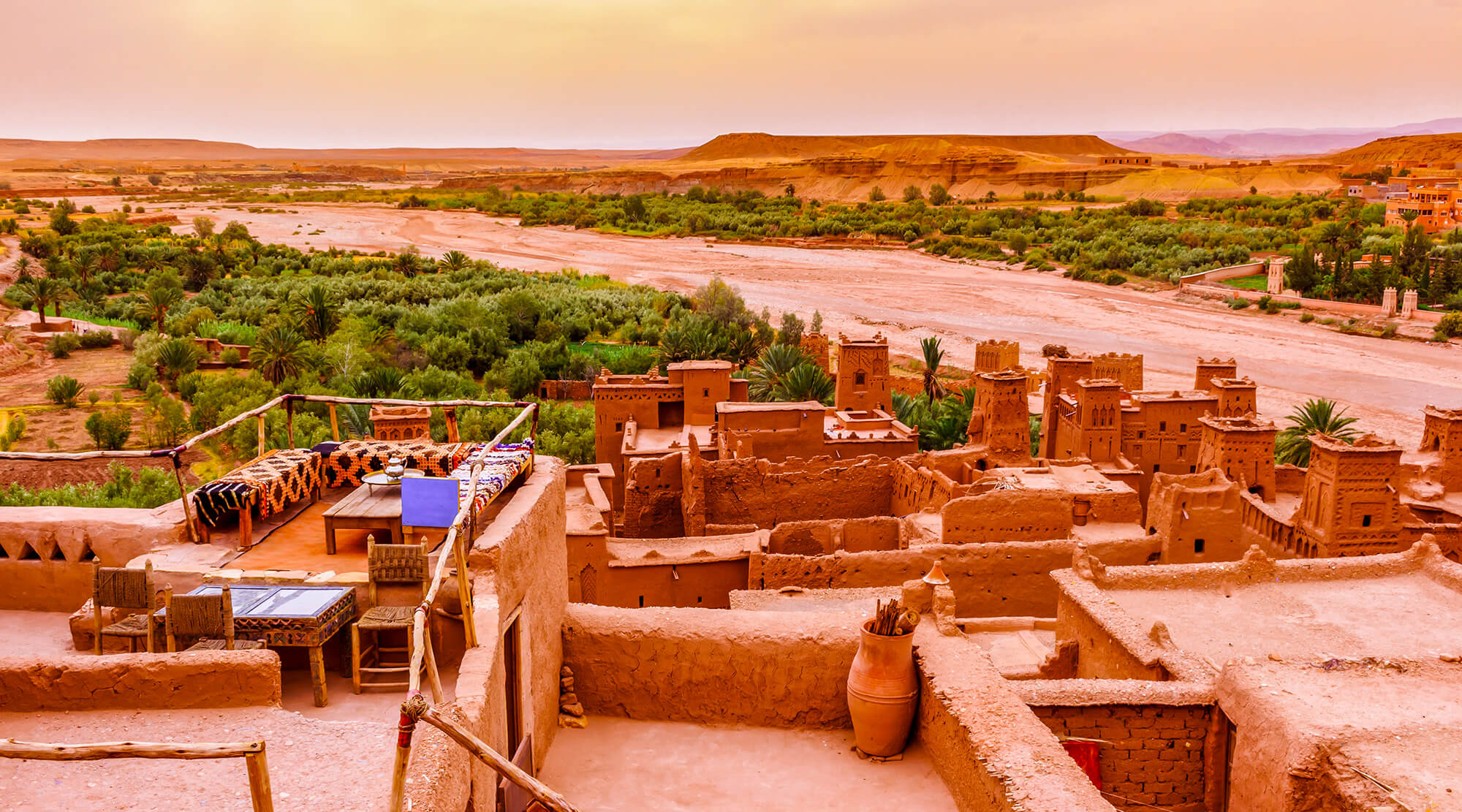
When to go and how long to stay
Desert days are most pleasant from November to March; April–May and October are warmer but still workable with sun protection and early starts.
June through September brings intense heat, so plan activities at dawn or dusk or consider Agafay if you’re heat-averse.
If you’re starting in Marrakech, Agafay works as a half-day or overnight; Zagora makes sense as a 2-day/1-night escape; Merzouga shines on a 3-day/2-night or 4-day/3-night loop that includes gorges, valleys, and kasbahs.
From Fes, a two-day swing to Merzouga with a desert night, then onward toward Todra/Dades and Ouarzazate, creates a beautiful overland arc to Marrakech.
What to bring when visiting the deserts of Morocco
Water is crucial to stay hydrated. Pack a refillable bottle with capacity for two to three liters.
Sunglasses to protect your eyes from harmful sun rays.
Sunscreen is another important item, a SPF 50+ should keep your skin protected. Many people tend to forget just how intense the desert sun is especially over long durations. Make sure to put it on before you board a camel!
Loose, breathable clothing is kinder to skin and sand; a large scarf or buff lets you cover face and neck when the wind rises.
A flashlight or headlamp is always a good idea and comes in handy.
Lighter or matches – firepower is a good back up.
Portable Charger for your phone or camera because your battery will likely run low taking all those photos!
Insect Repellant to keep those bloodthirsty beasts away!
A blanket will add an extra layer of warmth if you plan on spending the night in the desert.
Hand Sanitizer to rid those germs goodbye!
A simple First Aid Kit, just in case!
A small backpack to carry these items will make it easier for you to transport them on your journey.
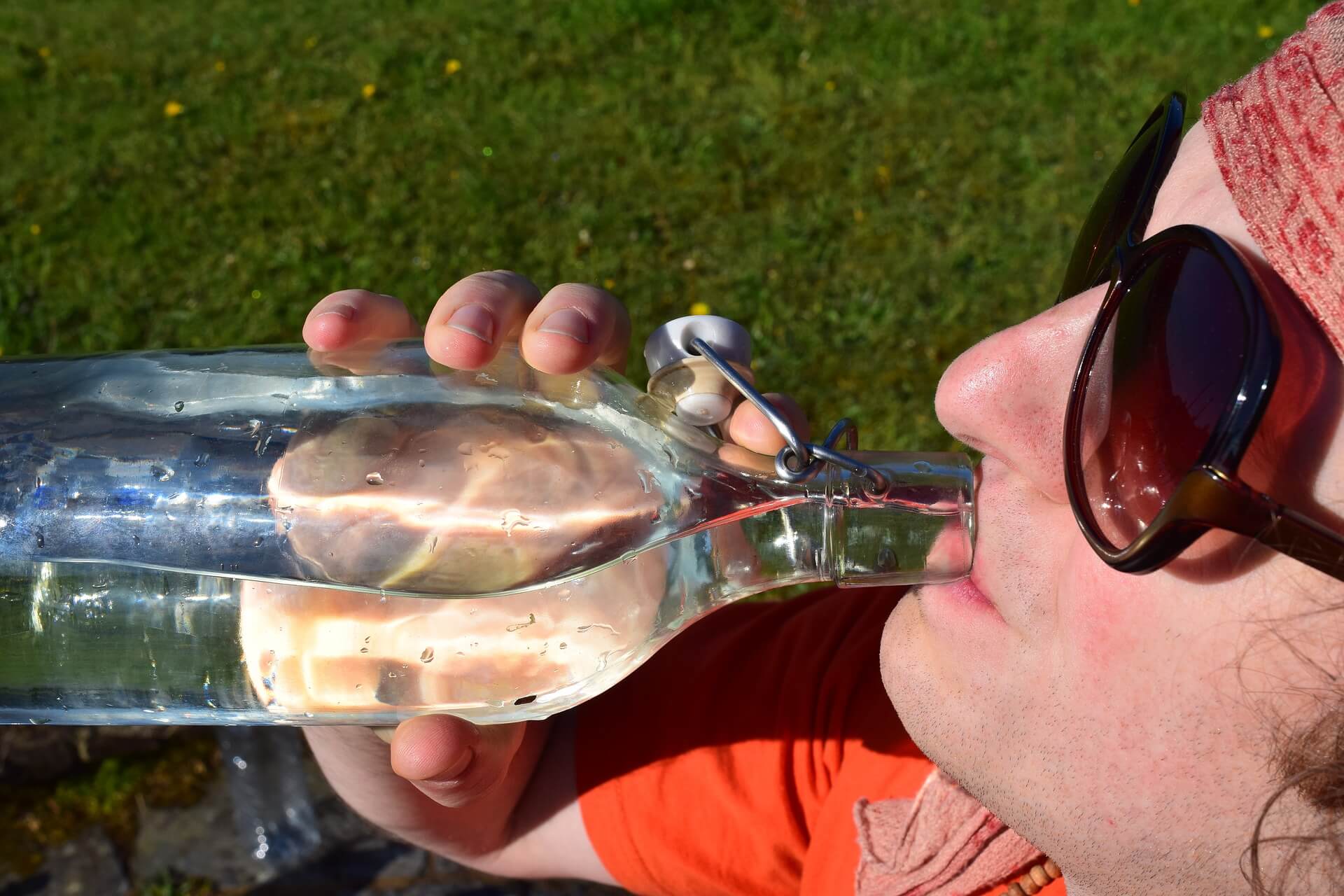
What to Wear in the Desert
During summer, it’s best to wear loose-fitting, comfortable pants as they will be your best friend on that camel ride. Long-sleeved linen shirts while on a trek to protect your skin from the sun.
A sombrero hat or wide-rimmed hat will keep your face shaded and your head cool. Breathable shoes or sandals that won’t fall off your feet are also advised.
When traveling during the Winter season, be aware that temperatures can drop pretty low so it’s good to pack warm clothes that can be layered and a warm sweater. It’s always better to be safe than sorry.
A warm, windproof jacket and a warm hat are a definite must in case the weather turns or a sand storm arises.
No matter what the season, you will want to pack a large scarf to protect your face from the wind, sand, and sun.
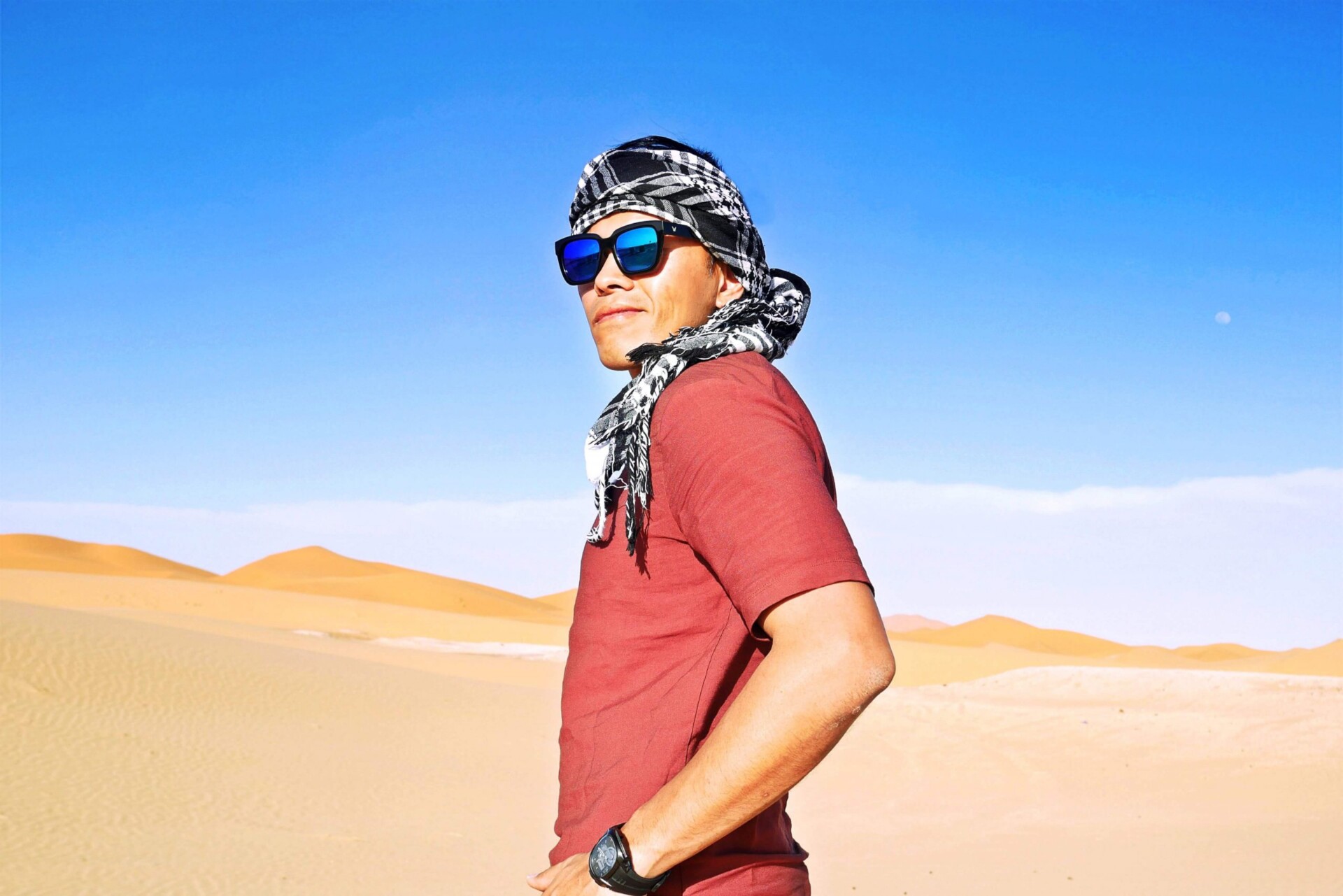
No trip to Morocco feels complete without a spell in the desert—an evening of stillness, a sunrise that rinses the dunes in gold, a quiet walk where your footprints are the only story.
When you’re ready, browse our desert tours, add some adrenaline with quad biking, and brush up on Moroccan culture before you go.
🧭 FAQs
Q1: What’s the best time to visit the desert?
October–April for mild days and crisp, starry nights. Summer can be very hot; plan activities at sunrise/sunset.
Q2: How do Merzouga, Zagora (Erg Chigaga) and Agafay differ?
Merzouga (Erg Chebbi): tallest classic dunes, easy camp access. Zagora/Erg Chigaga: wilder, fewer crowds, longer 4×4 approach. Agafay: rocky “stone desert” near Marrakech—great for short trips.
Q3: How many days do I need?
At least 1 night to catch both sunset and sunrise. From Marrakech, 2–3 days round trip is ideal for Merzouga/Zagora; Agafay works as a half-day or overnight.
Q4: Are camel treks comfortable?
They’re gentle but bouncy. Most travelers manage 45–90 minutes. You can ride just for sunset/sunrise, or reach camps by 4×4 instead.
Q5: What should I wear and pack?
Loose long sleeves and trousers, wide-brim hat, sunglasses, SPF 50+, neck scarf/shemagh, sturdy sandals or light hikers, 2–3L water, headlamp, power bank, and a warm layer for nights.
Q6: Is it safe?
Guided routes and camp areas are well traveled. Book licensed operators, follow guide instructions, and avoid wandering dunes after dark.
Q7: Can I sandboard or do quad biking everywhere?
Sandboarding: best on soft high dunes (Merzouga, Erg Chigaga). Agafay is rocky—no boards. Quads/buggies and 4×4 tours are common in Merzouga/Zagora.
Q8: What about traveling during Ramadan?
You can still go. Some cafés close by day, dinners start later, and evenings are festive. Avoid eating/drinking publicly in town during daylight.
